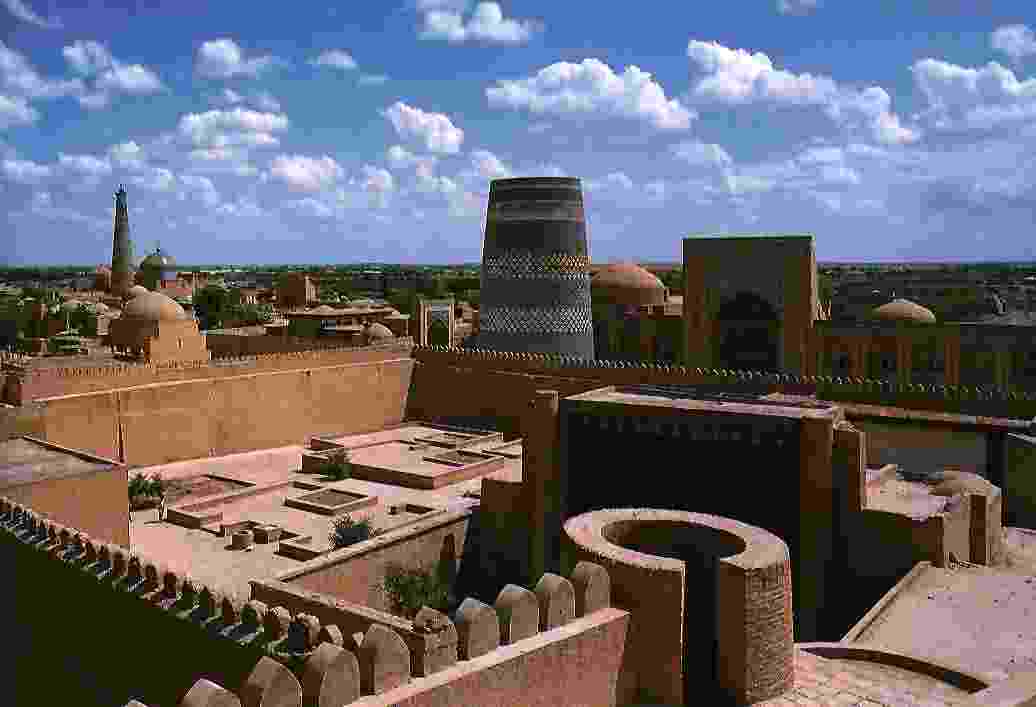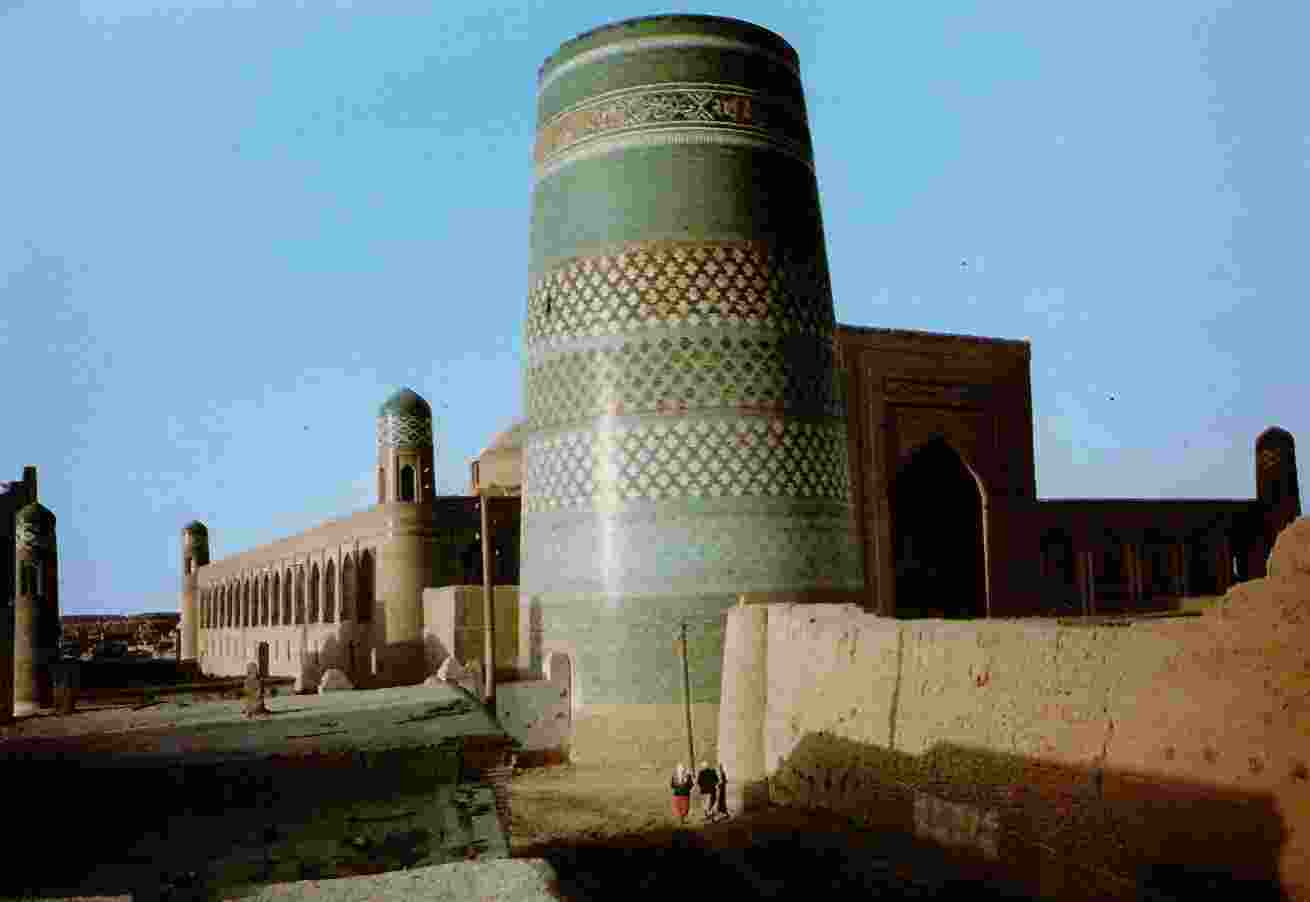Khiva is mentioned first in the manuscripts of Arab geographers
from the 10th century. They describe Khiva as a city situated on the border
of a desert. According to archeological data, Khiva had already existed
in the 6th and 7th centuries. During 11th and 12th centuries, Khiva was
a small town-fortress. Like other towns of Khoresm, Khiva was destroyed
by the Mongolian invasion. From the second half of the 16th century as
the capital of Khoresm, Khiva became one of the most powerful cities of
Central Asia. In the 18th century, Khiva was ruined over nomadís forays,
ruinous internal wars, and the invasion of the Iranians.But at the beginning
of the 19th century, a new dynasty of rulers came to power. Great construction
works characterizes this period. Majolica, marble, paintings, and carving
were widely used in construction.
Khiva is divided into the inner town - Ishan-Kala where
about 60 historical monuments are located and Dishan-Kala - the outer town
where citizens of Khiva live and work. The inner town is surrounded by
a high clay fence with four gates pointing out the four sides of the Universe.
The most ancient part of the city is the Kunya-Arch Fortress. This building
was built in the 17th century. The high rack fence separates the fortress
from housing estates. Inside the fortress are such constructions as a palace,
arsenal, offices, the mint and a mosque. Muhammad-Amin-Khan Madras (1851-1852)
is the largest madras in Khiva. It includes an auditorium, cells, winter
and summer mosques, and a library. Madras has five-cupola entrances and
a square yard surrounded by two-story cells. The brick mosaic was used
to decorate the facades, and intricate woodcarvings flatter the entrance
door. In front of the madras is the minaret Kalta-Minor (1853-1855). Designed
to be the highest minaret in Khiva, it did not reach its desired height,
but stands tall and stately among beautiful old buildings and monuments. |

